All images courtesy of Shorefire Media
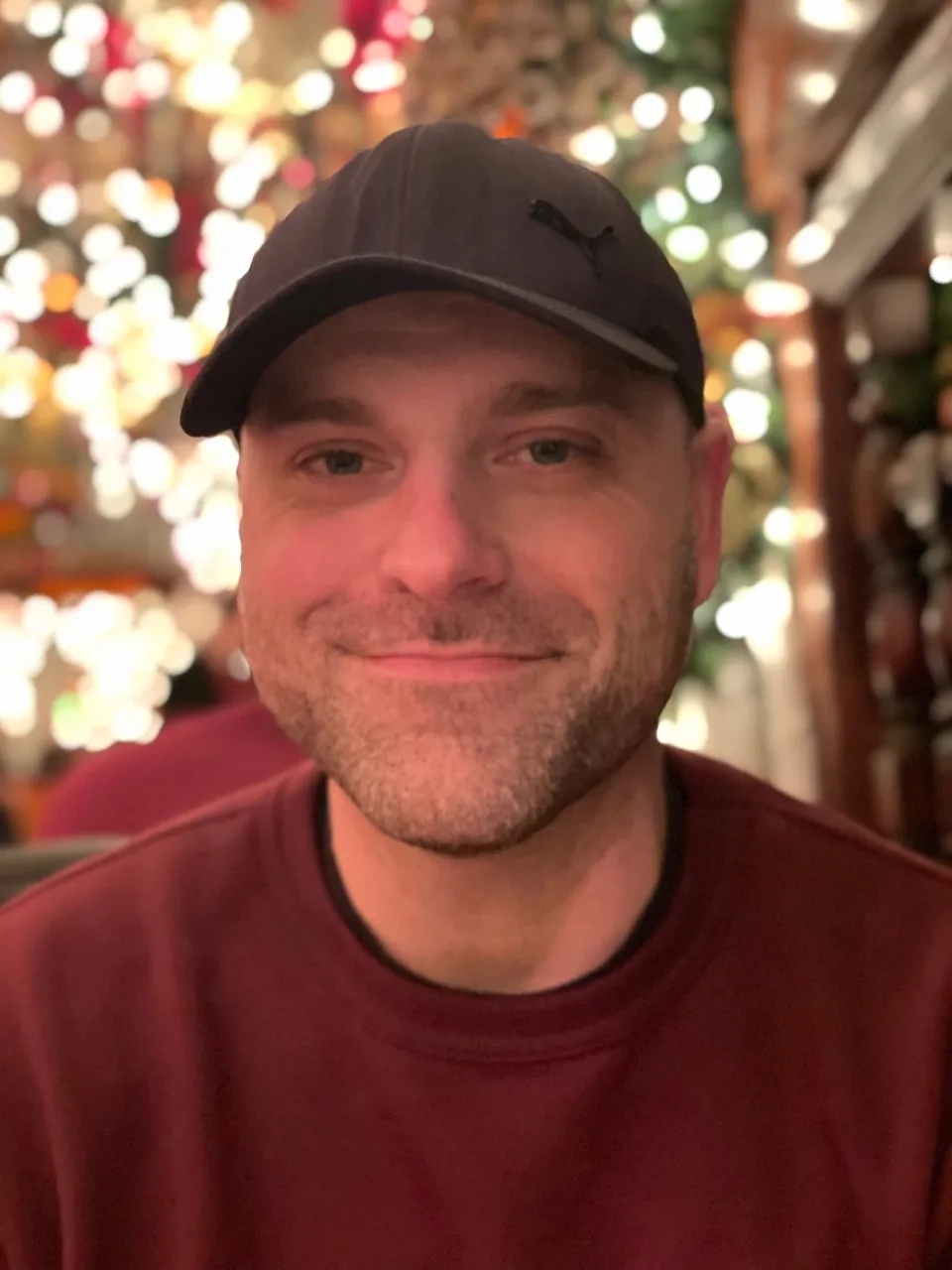
By Andrew Daly
andrew@vinylwriter.com
In an era of larger-than-life rock mega-bands, one independent N.Y.C. outfit had a vision of bending back the arms of rock music’s proverbial clock.
Amplified and sanctified, in the present day, Blondie sits up top the mountain as unquestioned axiomatic legends amongst its peers. Still, in the mid-70s, the N.Y.C. stalwarts hardly could have imagined that they might be anything more than a meager footnote within rock lore.
Be it fate, or be it felicity, Blondie came of age at the perfect time, with music fans finding themselves bored and looking for something more, yet simpler, all in the same breath.
An amalgamation of spike-headed punk ethos, 50s greaser mentality, and 70s glitter-bomb glam, Blondie encapsulated all that was to come, and more as multiple waves of music washed across an unsuspecting scene through storied venues such as Club 82 and the infamous CBGBs.
In the wake of two stablemate bands coming to an end in Sweet Revenge and The Stiletto’s, Clem Burke (drums), Debbie Harry (vocals), and Chris Stein (guitar) came together in 1974. Through sweet symbiosis, the delightful cocktail that was Blondie began to percolate in a tiny rehearsal space on West 38th Street.
Soon, Burke would bring in high school chum Gary Valentine on bass, nearly completing the initial lineup, eventually rounded out by keyboardist Jimmy Destri. With the fivesome together, Blondie began its initial run of gigs as CBGBs, a proving ground for the band, along with many other circuit cohorts such as The Ramones, Television, and the Talking Heads.
Initially declassed within a crowded scene bristling with unbridled talent, all of which was at a near-boiling point; eventually, Blondie managed to stand out from the rest. Once thought esoteric, suddenly, Blondie’s glamour meets gutter aesthetic and never-say-die mentality would manifest them a one-off deal with Private Stock Records.
With Brill Building hero Richard Gottehrer at the helm, Blondie’s one-off suddenly morphed into a full-fledged record. In 1976, Blondie was unleashed unto the world, forever changing the zeitgeist and eternally embedding the would-be stars into the fabric of pop culture lore.
If Blondie had stopped there and simply continued as they were, perhaps no one would have blamed them. After all, the recipe had paid dividends. But Blondie remained ever-restless, and over the next five years, Plastic Letters (1977), Parallel Lines (1978), Eat to the Beat (1979), Autoamerican (1980), and finally, The Hunter (1982) proved that Blondie, as a band, was far from a one-trick pony.
As he prepares for yet another run to glory with Blondie in 2022, Clem Burke dug in with me via phone, where the veteran drummer and I took a deep dive into Blondie’s first era, where against all odds, they flipped the script and went from N.Y.C. street rats to eternally tasting the sweet spoils of success.
Andrew:
With the Against the Odds 1974-1982 box set out, I wanted to focus on Blondie’s initial era, Clem. Going all the way back, how did you first meet Debbie Harry and Chris Stein?
Clem:
Well, there was a place in New York called Club 82, which was on East 4th Street. So, I had a band called Sweet Revenge, which was like this glam rock band, and it was kind of at the tail end of the whole New York Dolls era at Club 82. I always bring that place up because it was very overlooked in the history of the N.Y.C. music scene, in general. It was funny, though, because it was just around the corner from CBGBs, which really hadn’t started yet. I think it was still called Hilly’s on the Bowery at this point. But anyway, I had a band, as I mentioned, Sweet Revenge, and Debbie and Chris had a band called The Stilettos, and we had gotten on the same circuit around New York City at the time, and I would run into them back then.
Now, back then, you’d do things like putting an ad in The Village Voice. And it was in the back pages where you’d find musicians looking for work, or an apartment, and things like that back in the day. This was obviously before the internet, Craigslist, and all that kind of stuff. Anyway, I responded to an ad that Debbie and Chris had put in the musicians wanted section of The Village Voice, and then I went and had a meeting with them at their little rehearsal space, which was on West 38th Street, right near Madison Square Garden. So, I get there, I sit down, and we just kind of had a chat, we talked about our mutual musical influences, and it went from there.
Andrew:
Paint a picture of Blondie’s earliest days leading up to your first gig as a band.
Clem:
We rehearsed a little bit in the studio and in the rehearsal space on West 38th Street, and we were doing quite a few cover songs at the time. And you know, famously, I think my first gigs at CBGBs with Blondie was when our bass player, Fred Smith, decided he was going to depart and join the band Television. He kind of made that announcement in between our sets at CBGBs that night, and that basically seemed like that was the end of the band for a while. But then, I brought in my high school buddy Gary Valentine to play bass, which of course, he had never done before. [Laughs]. So, by this time, we were living in a storefront on East 10th Street, and Gary’s audition was simply him reciting a few of his poems, and I think he played one of his songs on the upright piano that was in the rehearsal room. With that, Gary joined, and that really began, for me at least, what became known as Blondie, and that was the group that made the first album.
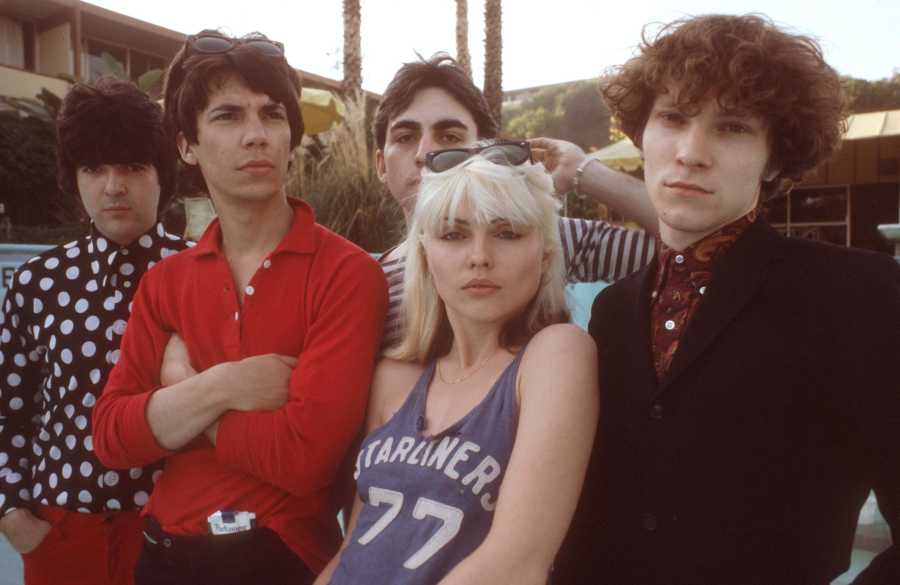
Andrew:
Blondie was an integral part of a significant shift in music at the time. What are your memories of that scene at ground level?
Clem:
Well, to tell you the truth, music at that time really wasn’t making much of a change just yet. I think everyone was in their own little space, just sort of creating music that was different from pop music at the time. As we all know, it was the era of bands like Yes, Kansas, Led Zeppelin, and things like that, and we were more harkening back to the music that influenced us from the start, which was from the 50s and 60s. That’s really the original sound of Blondie, and what people will tell you that we sounded like in the early days. And you have to remember, at that time, that type of music was not popular at all, not in the slightest. But that was how I managed to find my partners in Blondie because we were all on the same page as far as the type of music we liked and what we wanted to play. It was very much an underground world at that time, and I’d say that at that point, there was no major musical shift happening yet.
What it really should be looked at as is that there was a handful of bands playing at a club on the Bowery called CBGBs. I think everyone was exploring a different way or harking back to the roots of rock ‘n’ roll, which at the time wasn’t particularly popular. At that point, it was all about so-called “progressive rock” and things like that. We were just operating in our own little bubble, and the thing I always find very interesting is that the bands that became known as “CBGBs bands,” they couldn’t have been more different from one another. So, I’m not exactly sure what the sound of CBGBs was, except that maybe we were all influenced by one another at one time or another, shared that stage, and we all essentially made our own way. I mean, we were certainly influenced by bands like The Ramones and Television early on, and of course, it all started with the New York Dolls and the Velvet Underground.
I think everyone that played at CBGBs was very much influenced, whether it be the whole do-it-yourself attitude or just the way the roots of rock ‘n’ roll – especially with the New York Dolls – were being portrayed. I was into the glam thing, and so was Debbie, who, for me, was an archetypical glam rock front person. I was always very much interested in being in a band that had somebody in front who would have that power and charisma. Debbie had that, you know, it was like a David Bowie, Jim Morrison, Marc Bolan, or somebody like that. So, I was really on a mission to find a person like that, and when I first met up with Debbie, I immediately knew that I had.
Andrew:
You touched on CBGBs. When you look back, how do you quantify the importance of that establishment to both Blondie and the movement that the band eventually became a part of?
Clem:
For me, CBGBs was a workshop that basically enabled us to make our mistakes in public. It’s interesting because very few of those moments were captured on video because there were no cell phones with cameras and things like that. We were able to work through our original music in front of a minimal audience and get the feedback that we needed to continue. You know, we were pretty rough when we first began; as I said, my friend, Gary, he had never played the bass before. I had been in bands ever since I was a teenager, so I had a certain proficiency on the drums, so as I said, CBGBs was really a workshop. I mean, in the first couple of years, we were, as I said, operating in a bubble. When we would play CBGBs, maybe 100 people – that were mostly other musicians – would be in the audience. If The Ramones were playing, the members of Blondie would be in the audience and vice versa.
CBGBs was also a hangout for the locals. I mean, as I mentioned, at first, we were living on East 10th Street at the Blondie rehearsal studio, but eventually, we moved to a house that was a block south of the Bowery so that we would be at CBGBs every night. I think back on it, and yeah, I probably saw The Ramones 100 times between ’75 and ’76. And, of course, there were many times that we were on the bill with them as well. This was back when everybody was just kind of making their way, and we all had these sort of natural progressions. The analogy that I always like to make – and I’m assuming this – is that there was probably the same kind of thing going on at The Cavern Club in the mid-60s down in Liverpool. Back in the 60s, you had many bands playing in front of selective audiences, and a handful of those bands became these worldwide phenomena, particularly, of course, The Beatles.
So, I think CBGBs was very much our version of The Cavern Club, only in New York City, and it was certainly our musical workshop at the time. It’s also important to remember that Hilly Kristal, you know, his mandate was that, for the most part, the music that we played at CBGBs had to be original. Now, Hilly didn’t necessarily have to like it, but he wanted it to be original. Hilly was very opened-minded, but he did not want a bunch of cover bands coming in each night, you know? The funny thing is, Blondie always managed to slip a lot of covers in, and so did The Ramones. He was funny; as an owner of CBGBs, I wouldn’t even call him an entrepreneur, although he did begin the bar. It was a great place. Everyone kind of flocked to CBGBs even though it was this out-of-the-way place, just so they could workshop their music.
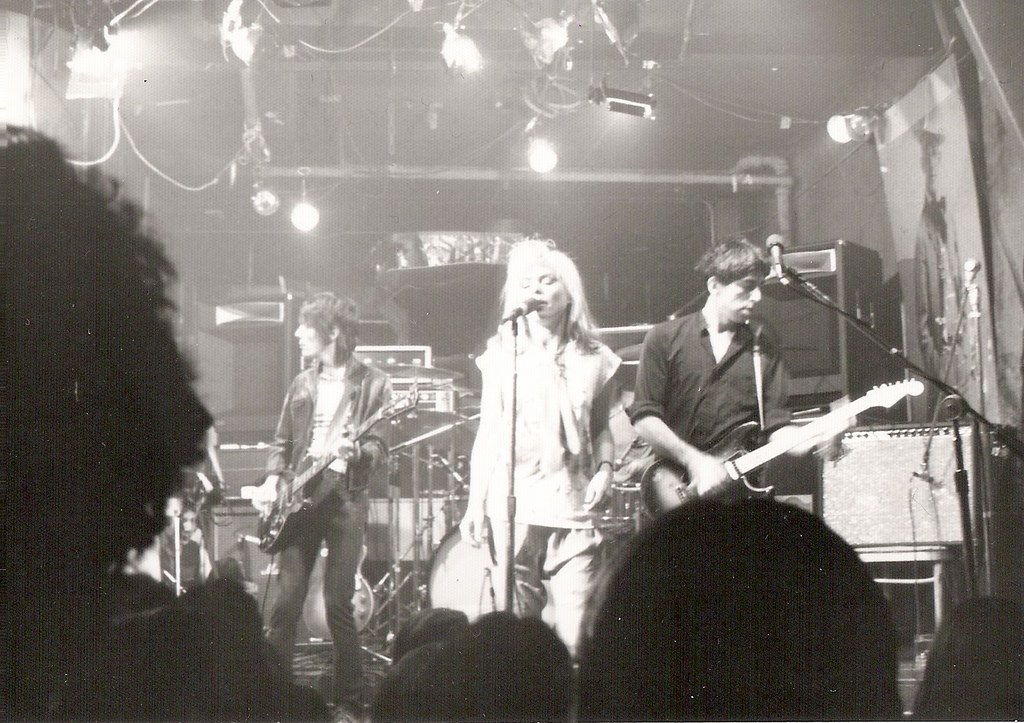

Andrew:
With an astounding level of diversity gracing the CBGBs stage, what do you feel set Blondie apart from the rest of the pack?
Clem:
Well, obviously, having Debbie Harry as our front person was a door opener for sure. But we all had our particular musical influences that kind of assimilated into the sound of Blondie. I mean, for instance, Chris was always very much influenced by R&B, and we used to do a lot of R&B covers. I particularly liked bubblegum music like the 1910 Fruitgum Company or Ohio Express, and I think both of those things were very much a part of the early sound of Blondie, particularly on our first album. And when we got Jimmy [Destri] as our keyboard player, who had this Farfisa organ, he immediately changed the sound of the band. I guess I should really say that what Jimmy did was he expanded the sound of the band. We had originally wanted a straight piano or keyboard player, but Jimmy, he came in with that Farfisa organ and brought that specific sound in like you heard on that old track, “96 Tears” by Question Mark & The Mysterians. So, that was a very identifiable sound that became a Blondie trademark early on. You can really hear it when you listen to things like “X Offender,” “In the Sun,” and things like that.
Andrew:
What made Private Stock the right label to house Blondie for its self-titled debut?
Clem:
Good question. We were fortunate enough to have Richard Gottehrer as our producer, who came right out of the Brill Building. He was really about that whole method of making music and of songwriting. Of course, Richard had written several hit records like “My Boyfriend’s Back,” “I Want Candy,” and things like that. So, while Richard was our producer, in a sense, where he really helped the most was with the arrangements, and that was very important on the first Blondie record, especially since we were harkening back to all of that old music that we loved, and Richard had been a part of all that.
Going in, we had a demo that we had recorded prior with a guy called Alan Betrock, who was the editor of the New York Rocker at the time and was a big champion of Blondie. So, our first sessions were in this little basement studio in Queens with Alan, and then we began to get a following at CBGBs, and we were offered a deal for a first single to be released on Private Stock. I think Richard had started his production company and had connections with Private Stock too. Richard had originally started Sire Records with Seymour Stein, but for some reason, he and Craig Leon, who also was instrumental in recording Blondie back then, took a chance on us. Craig went on to produce the first Ramones album and the band Suicide too.
Anyway, Richard had access to a studio, Plaza Sound, which was the studio that was supposedly built for the N.B.C. Symphony Orchestra. And so, we found ourselves in this really gigantic, ambient room on top of Radio City Music Hall, and I have to say, it was quite an experience to be in a studio like that. When we tried to take in the ambiance of this studio, we were kind of trying to emulate the wall of sound, Phil Spector type of thing. But anyway, with Richard being a songwriter, he was a big help when it came time to work out the arrangements. And the way he made records, I think, was the way he did it back when he was working with The Strangeloves, or The Angels. There were maybe two or three songs on our first album, like “In the Flesh” and “X Offender,” that he spent a lot of time on, and they have quite a bit of production. But one thing I’ve always felt is that those tracks were not really the sound of Blondie as a live band, you know? It was the sound of Blondie making a record, being produced in a recording studio, and showing what we were capable of in the clear light of a studio recording.
As for the rest of the songs, although they’re all great, I think that maybe we spent less time on those songs. For songs like “Little Girl Lies, and “Man Overboard,” I think we would record the basic track, and then we would basically just decide if it was good enough or not, and if it was, Richard would say, “Okay, let’s move on.” So, Blondie was done relatively quickly, with us concentrating on several so-called “singles” to be released from the album. It was done that way because, at first, we only had a deal for the single, and then, later on, Private Stock decided that they would give us a deal for an entire album. So, it quickly went from one single to making an entire album at Radio City. [Laughs].
Andrew:
If my memory serves, “X Offender” was initially titled “Sex Offender,” right? What prompted the title change?
Clem:
With that track, it was based on a true story of a friend who was involved in a case where the guy was 18, and his girlfriend was 17, so she was underage. Well, she got pregnant, and the parents got very upset, and they tried to get him locked up. So, the title originally was “Sex Offender,” and it was kind of tongue in cheek, but our record company didn’t care for it. In the end, they decided to call it “X Offender” because the word “sex” was not a word you often heard in the media back then. If I recall, Gary had written the music, and Debbie had written the words based on a real-life experience we had watched unfold.
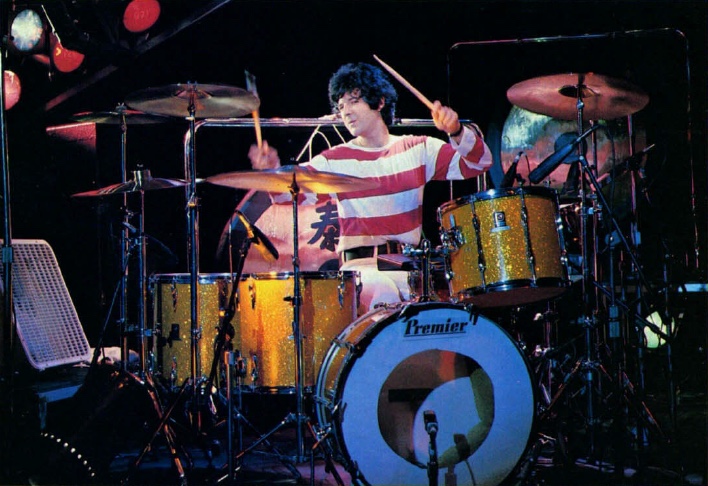

Andrew:
After the move to Chrysalis Records, was there any label pressure to shift your sound at all?
Clem:
I think on Plastic Letters, the majority of the songs were written by Jimmy Destri, our keyboard player, who only had contributed a couple of songs to the first album. I don’t think we ever felt any pressure about most things back then because we were not really dictated to. This was especially true when we were with Private Stock because I think they probably didn’t really know what to make of us. In the end, it was fun going back to CBGBs after that, too, because all of these interesting people started coming to our shows. It was the same with The Ramones or the Talking Heads, for instance. With us, suddenly, we had all these people showing up to see Blondie like Frankie Valli from the Four Seasons. I loved it because early Blondie recordings were rooted in the whole Brill Building, showbiz of New York City songwriting workshop, you know?
Aside from that, there was no pressure, really. I do remember our manager at the time, Peter Leeds, who was instrumental in our early success; well, while we were making Plastic Letters while still with Private Stock, Peter was negotiating the record deal with Chrysalis. So, although Plastic Letters was funded by Private Stock, it eventually came out on Chrysalis and never came out on Private Stock at all. Now, that whole transition was going on behind the scenes while we were making the record, and it was quite a coup how Peter pulled that off. And after that, Chrysalis reissued that first album, and there were a couple of hits in the U.K. off of Plastic Letters, with Chrysalis being an international recording company that was based in the U.K. primarily.
So, the initial dynamic that I saw in Debbie, you know, the possibilities of having real commercial success, I think that was proven to be true at that point. It was bittersweet, though, because Gary Valentine left before we recorded it. The song, “(I’m Always Touched by Your) Presence, Dear,” was a big hit in Europe, and Chrysalis said, “You’re going on a worldwide tour,” which they funded, and that lasted about six months. After that, once the tour kicked in, we basically went around the world promoting the first two albums. So, they were very helpful, and once we were doing our thing and got comfortable, things just kind of picked up.
Andrew:
In the wake of that commercial success, Blondie put out Parallel Lines, which featured the mega-hit “Heart of Glass.” What is your recollection of its inception?
Clem:
Well, “Heart of Glass,” for us, was an experiment. We wanted to try and take Kraftwerk and Donna Summer and then combine those two elements. That song had actually been in the Blondie repertoire since very early on. The version on Parallel Lines is actually the second version because we first recorded it back for the demo we did in Queens. For the Parallel Lines version, I remember that we had to manually program that synthesizer the day before so that everything could be linked together and synced up correctly. We had to do it all manually, for instance, the 32-note, arpeggiated synthesizer thing that had to be manually played because the analog synthesizer that we had would go out of time after maybe a measure or two. So, we started off by making the kick drum beat basically the click track, and I played along to the arpeggiated synthesizer riff in a very piecemeal way, so it took a long time to get through the entire track and lay down the quarter note bass drum. After that, we had to overdub everything over top of that.
As I mentioned, we were experimenting, and “Heart of Glass” was not supposed to be a feature track on the Parallel Lines album. I think it’s number ten on the second side of the album, so it wasn’t like we were featuring it, and we really had no aspirations for it. The first couple of tracks would be the ones that you would think had the most commercial potential at the time. It’s also important to note the big shift at that time, and that was that we had begun working with Mike Chapman as producer from Parallel Lines onward. Mike was very much interested in making a very pristine record with a lot of hit singles on it, and we all went about recording Parallel Lines with that in mind. Of course, you never know if you’re going to have any real success with it, right? But as fate would have it, Parallel Lines, which is kind of our touchstone record, really brought Blondie into the focus for the rest of the world, especially in the United States.
Andrew:
What went into the decision to cover “Hanging on the Telephone?
Clem:
There was a guy we knew named Jeffrey Lee Pierce, who went on to start and be the lead singer of the band, The Gun Club. We met Jeffrey when we first played at the Whisky a Go Go in Los Angeles in 1977, I think. After that, he became the president of the Blondie fan club, which some people may find hard to believe, especially when you look at Jeffrey’s history as he went on with The Gun Club. Hard to believe as it is, Jeffrey was very much a huge Blondie fan, and when we were on tour in Japan, he sent us all of these mixtapes. They were these cassettes that he sent over with a bunch of songs that he thought we would enjoy. Well, one of those songs was “Hanging on the Telephone” by a group called The Nerves.
So, we were on the road, checking this tape out, and we heard that song, and right then and there, we decided we would cover it. It would never have happened if not for Jeffrey, you know, him making sure we heard it. We all heard it, and we thought, “Yeah, it’s a good song. Let’s cover it.” And because it is on the Parallel Lines album, which is a big one for us, I think a lot of people are surprised to hear that that’s a cover. This said, you have to remember that Blondie has had quite a history of doing cover songs. As I mentioned, back in the days before we ever recorded an album, we did songs like “Little G.T.O.” by Ronny & the Daytonas, and we’d cover the Four Seasons cut, “Big Man in Town,” too. And, we’d had hit with “Denise,” which was a Randy & The Rainbows cover, so The Nerves cover made sense.

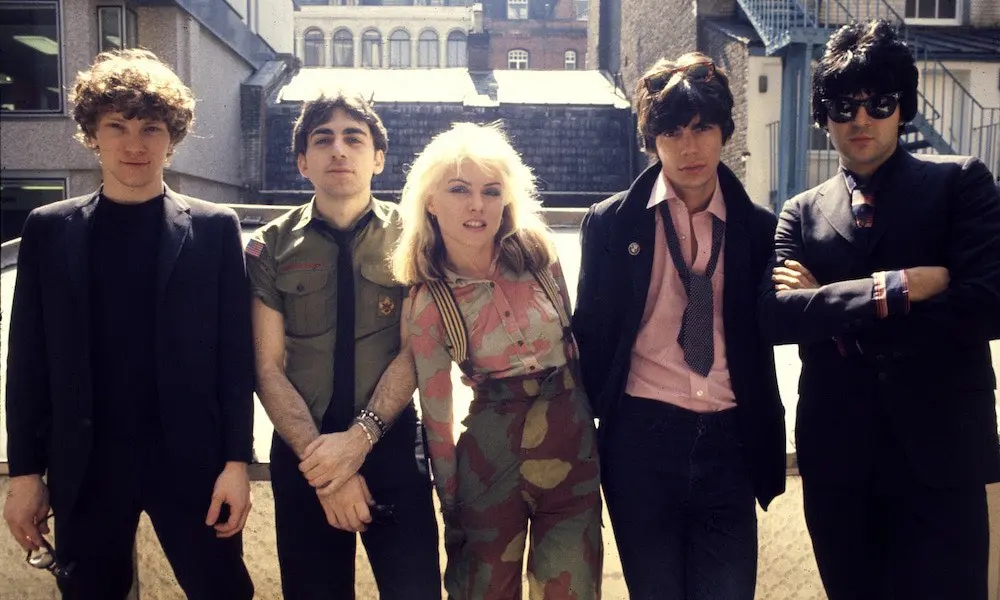
Andrew:
Eat to the Beat and Autoamerican featured even more drastic experimentation. Would you say Blondie was restless creatively back then?
Clem:
I think that Eat to the Beat was our most rock ‘n’ roll record for sure. It has “Dreaming” and “Atomic,” both of which were huge hits in the U.K., with “Atomic” going to number one. I think in between Parallel Lines and Eat to the Beat, we had such phenomenal success against all of the odds, and that definitely affected us. It’s actually why the box set is called Against the Odds because we could never have imagined we’d have that level of success. We could never have imagined or predicted the legacy of the songs at the time. We could have never imagined Blondie becoming what it has become over the years, and once we had that success, we ran with it, and we made a very rock ‘n’ roll record.
By the time we began recording Autoamerican, we basically had free reign to do whatever we wanted, and we did. The album was recorded in Los Angeles, which was the first time that we had recorded outside of New York City. I remember we really took advantage of some of the local L.A. session musicians that were available to us. For example, famously, Tom Scott plays saxophone on “Rapture,” which is a big part of that song. You know, I guess we just kind of just went for it with that one, and it came out really different. Going in, we had the budget, we had the time, and the agreement between all of us in the band was to try and expand the sound of Blondie. And I think that’s what we did on Autoamerican, and because of that, it has really come to be one of my favorite Blondie albums.
I do remember that at the time, I wasn’t sure what to make of Autoamerican by the time we finished recording it. And certainly, the record company didn’t have any idea what to do with it either. [Laughs]. I remember it clear as day, they called us up and famously said, “We don’t hear any hit singles on this record,” and that was a problem for them because an integral part of the success of Blondie was to have hit singles each time we put out a record. But they were proven to be wrong because both “Rapture” and “The Tide is High” became worldwide hit singles from that album. The takeaway is this: you never really know what’s gonna work. You can’t predict what’s going to strike a chord with the public. So, you just have to follow your musical instinct, which is what we’ve always done in Blondie.
Andrew:
The Hunter proved to be the end of the first initial classic Blondie era. What was the band’s collective mindset going in?
Clem:
We talked about the pressure of being dictated to, and in most ways, we had managed to avoid all of that. You know, whether it be in our style of dress, our musical proclivities, or whatever, we just kind of would go for it. We had a very huge musical palette, and we were we weren’t afraid to go all over the place with our influences and with our writing. Obviously, Autoamerican was a very successful album for us, and so with The Hunter, the simple answer is we wanted to push that envelope even more, and we made what I can describe as a concept record. The record talks a lot about being in the public eye and that sort of spotlight. We did a really great cover of The Marvelettes’ “The Hunter Gets Captured by the Game.” In the end, the album wasn’t accessible like the others before it, and unlike in the past, we were going in different directions than we had been. Unfortunately, that led to us taking a long hiatus for several years, which was basically the beginning of the end for the band at that time.
Andrew:
When you look back on the band and that initial run before the hiatus, how do you measure the importance of Blondie on rock music and that era in general?
Clem:
We refused to get caught up in the cliched parts of the show business, even though it does seem kind of ironic with Blondie because we had a very glamorous lead singer in Debbie Harry, and we had a lot of commercial success. But, you know, you could always refer back to somebody like Andy Warhol, he would mix art and commercialism together with great success, and I think that he was an inspiration to us in that way. But we never could have predicted that the legacy of the music would live on as it has, to where it’s now embedded in the fabric of contemporary pop culture to this day.
I think the obvious reason why people were interested in Blondie, especially musicians, is that we had a real do-it-yourself attitude. We were very much oriented that way. Now, whether or not we musically influenced other bands, if that’s the case, I certainly think our do-it-yourself attitude had a lot to do with that. I look back, and yeah, I believe in that way, we influenced bands like R.E.M., for instance. Maybe not in the sound, but certainly in the way of going about things. The way we followed our musical muse and constantly stayed true to the music, I’d say, was a big reason why people followed us.

– Andrew Daly (@vwmusicrocks) is the Editor-in-Chief for www.vwmusicrocks.com and may be reached at andrew@vinylwriter.com
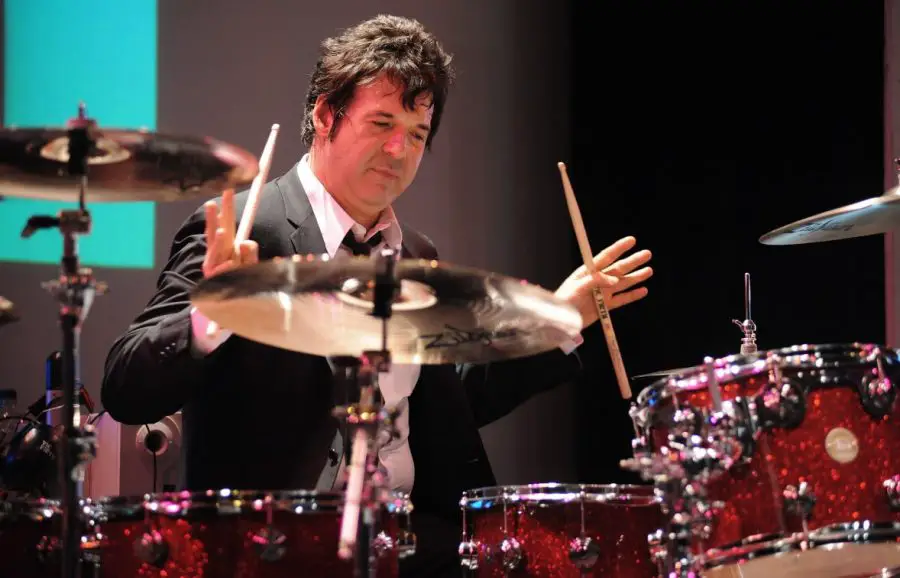
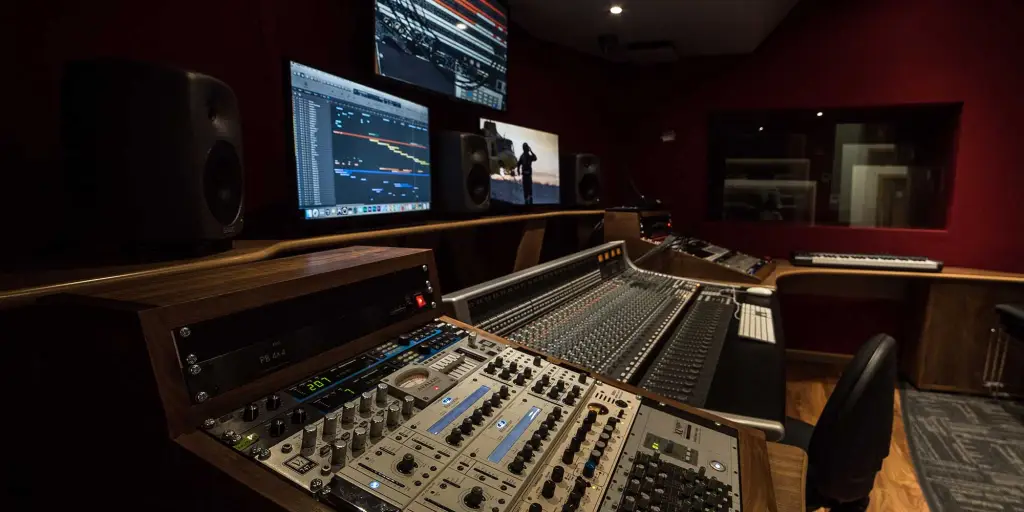

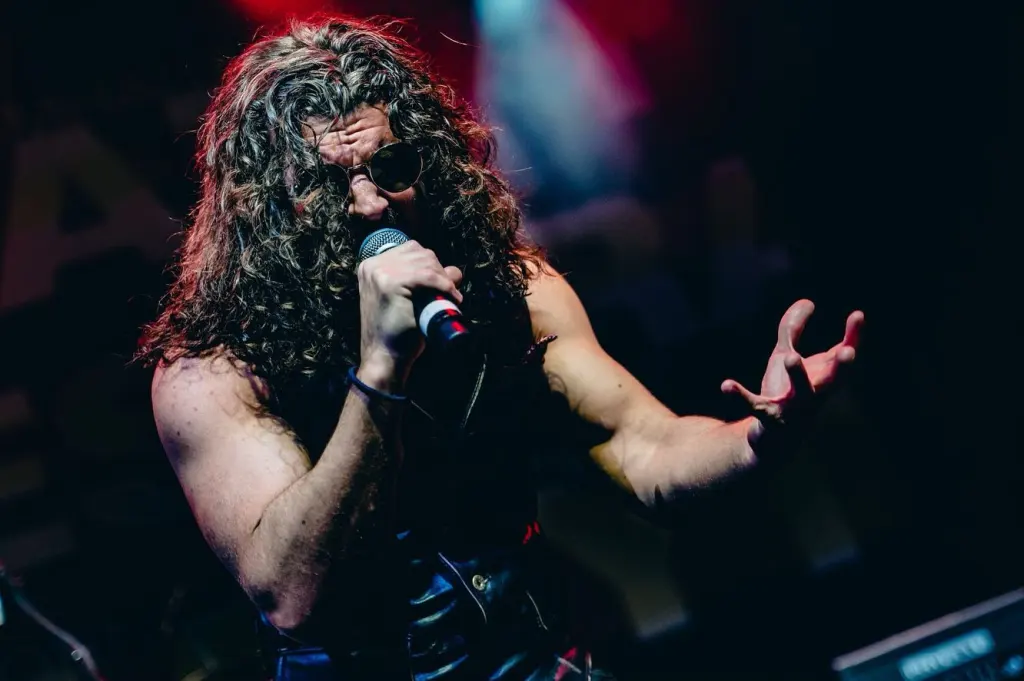
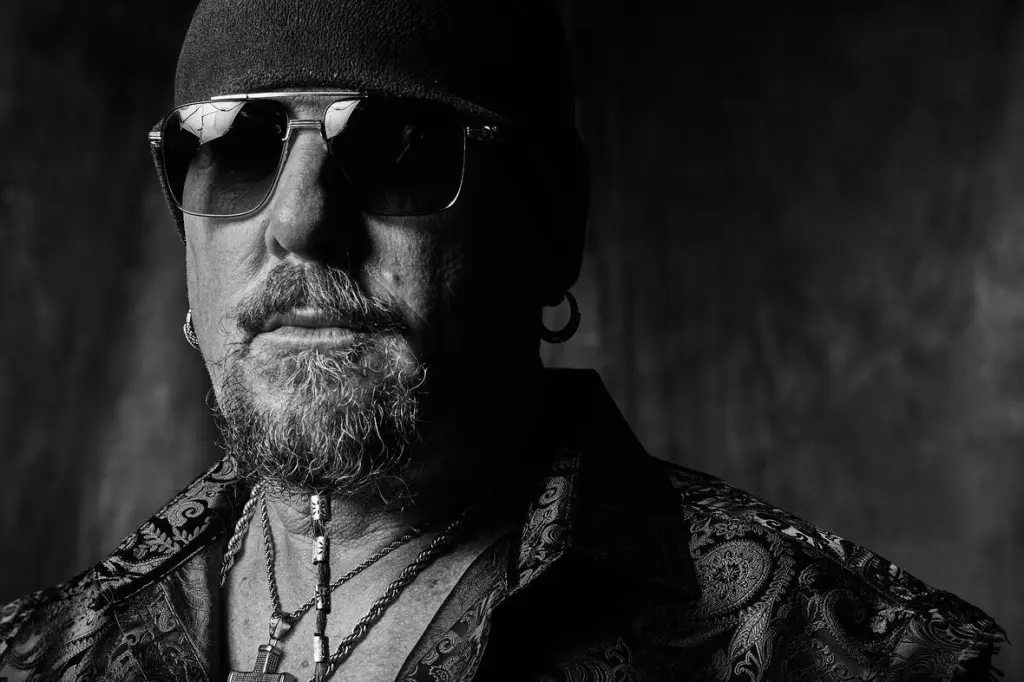
Leave a Reply